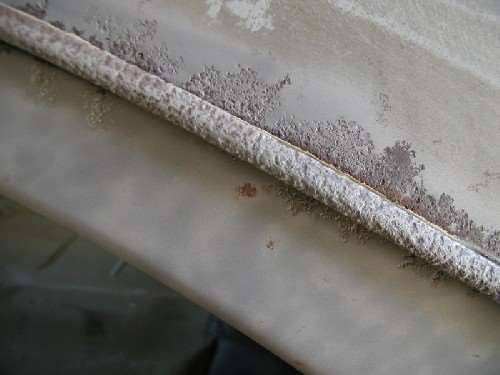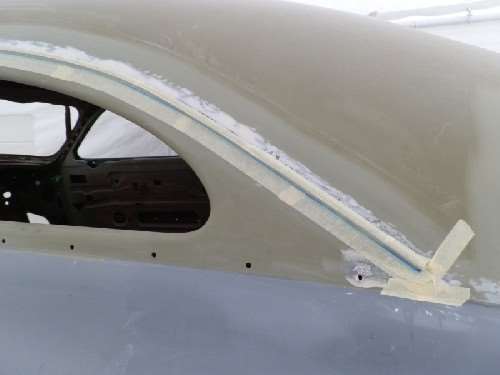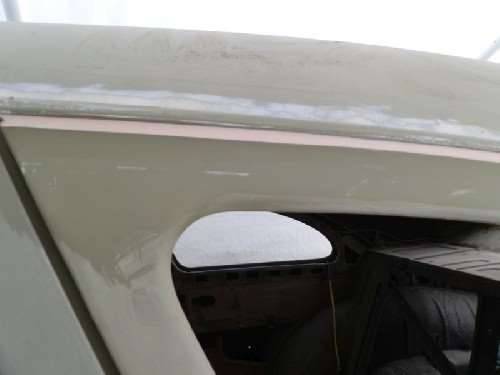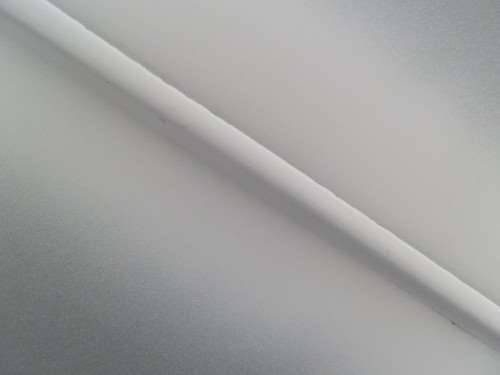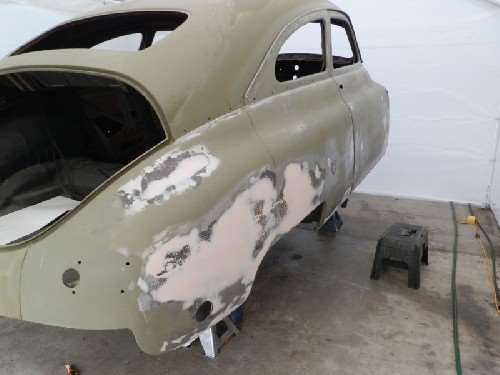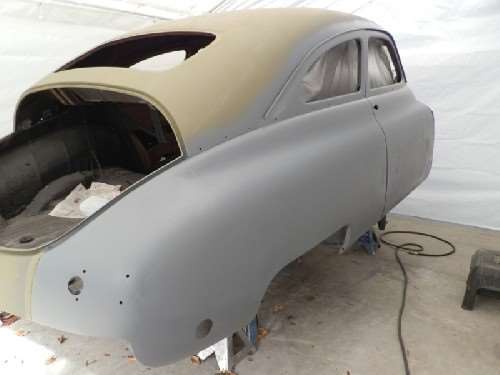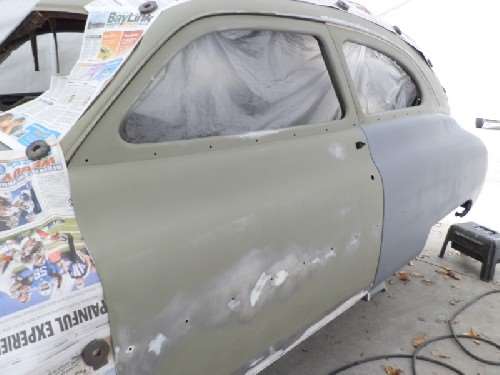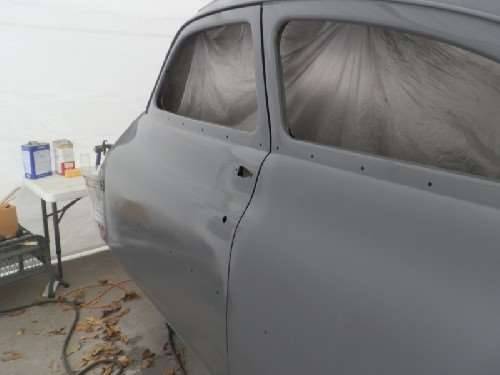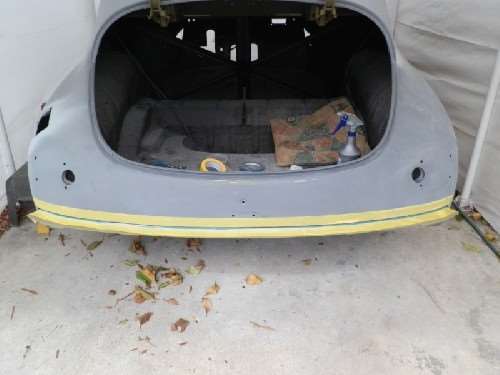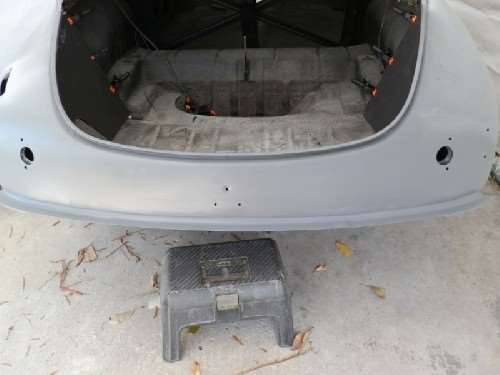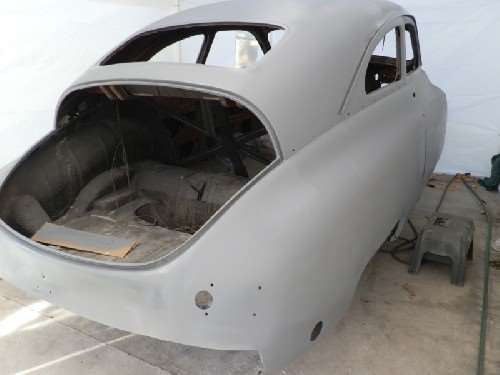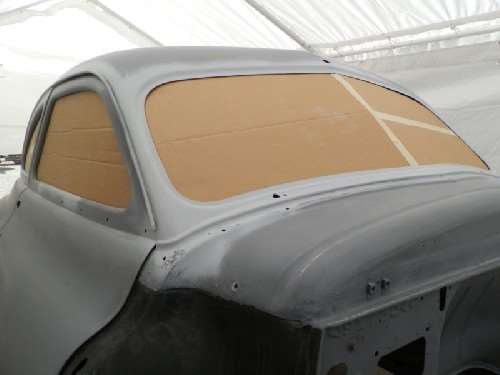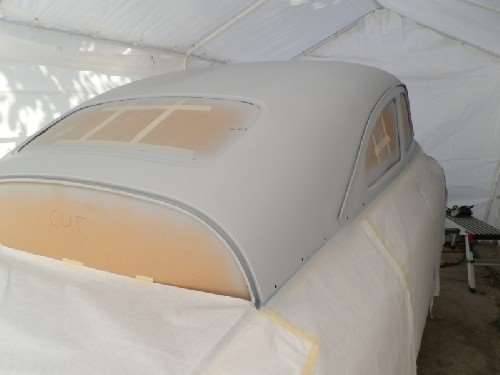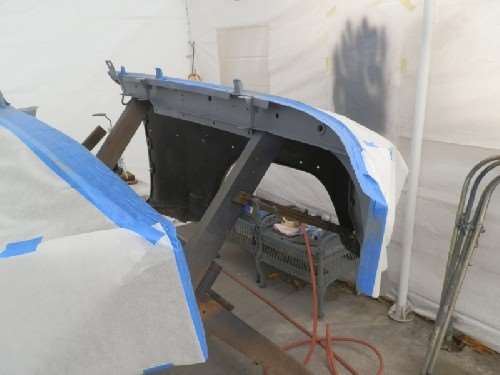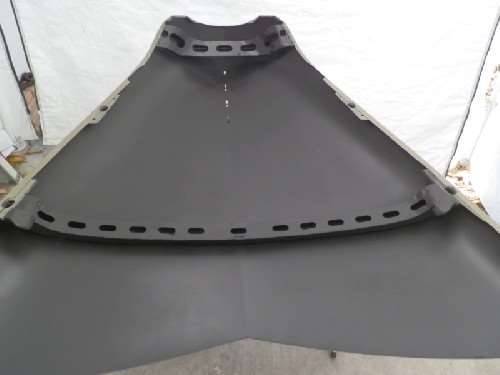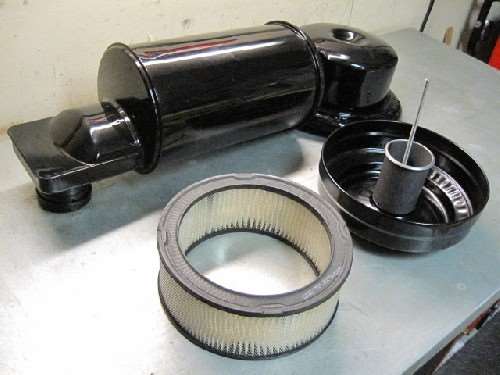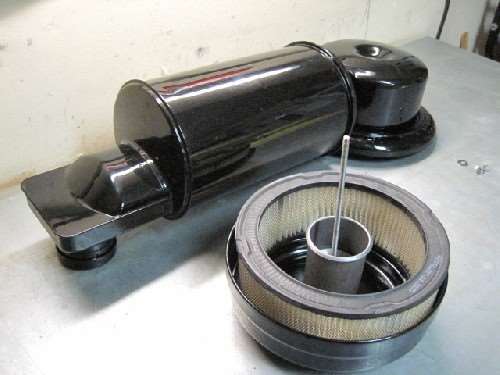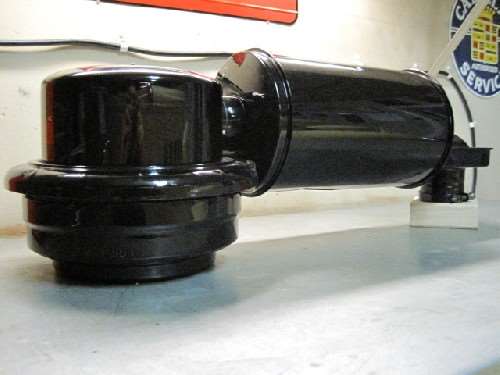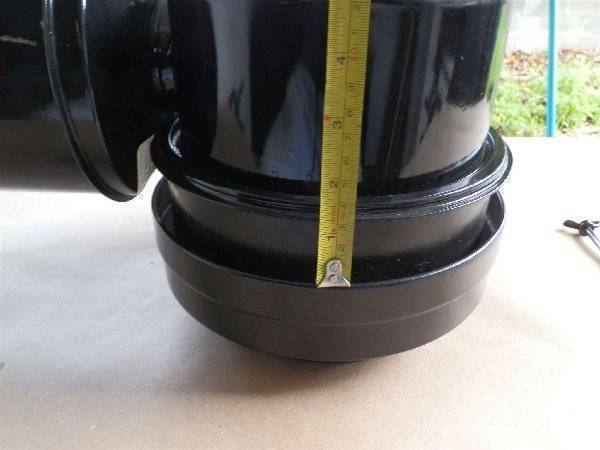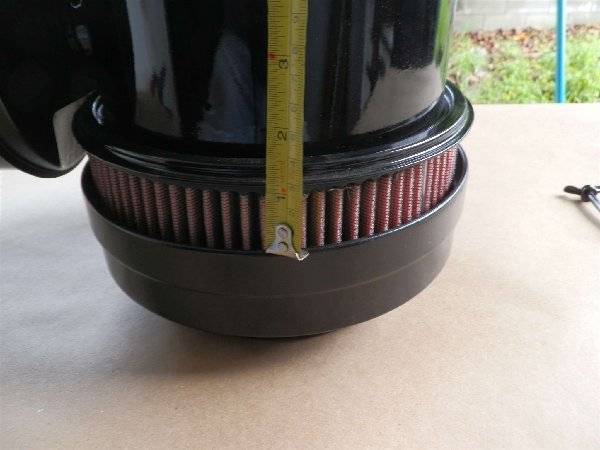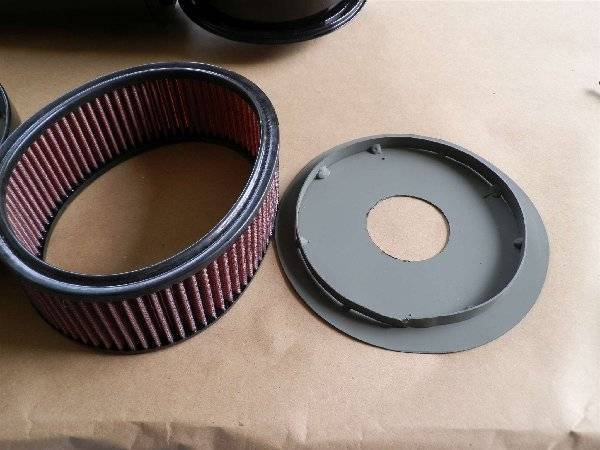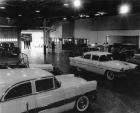|
Re: Joe's '49 Club Sedan
|
||||
|---|---|---|---|---|
|
Home away from home

|
Packard Project Summary 2016 Part 2
While the primer on the body was given time to cure, the heater parts were painted black. The air filter was repaired and also painted black. It was also modified to replace the original oilbath insert with a K&N-type washable filter element. The interior trim parts, the dash, steering column and window molding were painted a metallic brown rather than the original wood grain. The body was rolled out, masked off and interior was sprayed with LizardSkin ceramic insulation. All of the remains of the original tack strips that secure the headliner were removed and replaced with a composite tack strip sold by Bob Drake parts. The tray of the original battery box was totally rusted away but the legs were in good condition. Rather than replace the original long 6 volt battery, it was replaced with 2 Optima 6 volt batteries wired together for 6 volts. They are about the same size as the original battery so a new tray and hold-downs were built using the legs from the original box. I want to keep the car 6 volt but if that is not satisfactory, the batteries can be rewired for 12 volts. At this point, the body was ready for the final color painting. The color I picked was a non-metallic burgundy basecoat with clearcoat over it. It is similar to one of the Series 22/23 original colors. I got a few scrap sheetmetal panels from a body shop friend of mine and shot some color test of the paint. It came out fine and the car was ready to paint. Attach file:  (48.40 KB) (48.40 KB)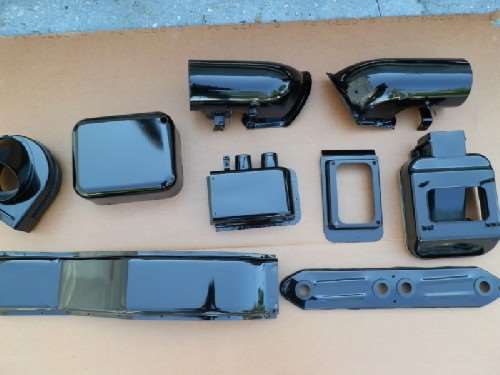  (49.99 KB) (49.99 KB)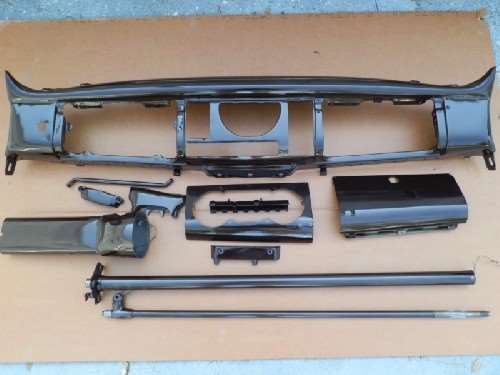  (52.44 KB) (52.44 KB)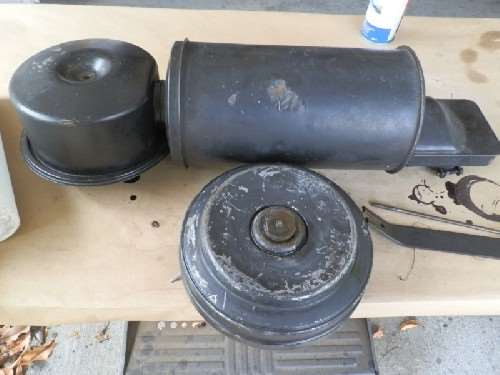  (40.26 KB) (40.26 KB)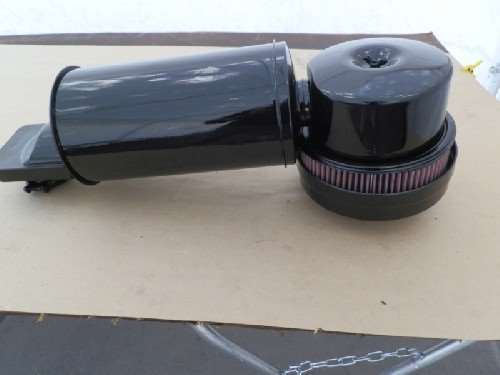  (46.76 KB) (46.76 KB)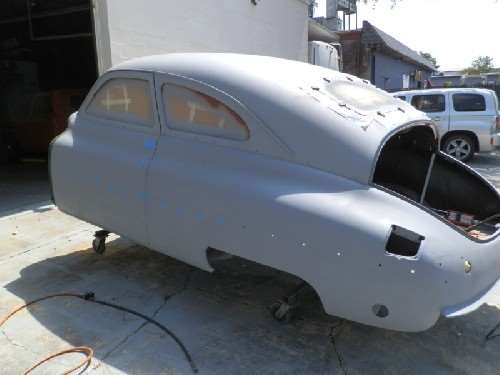  (51.42 KB) (51.42 KB)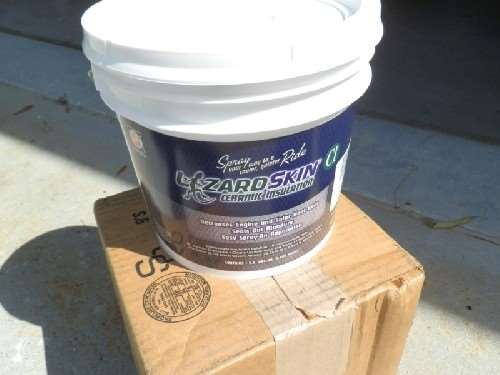  (73.36 KB) (73.36 KB)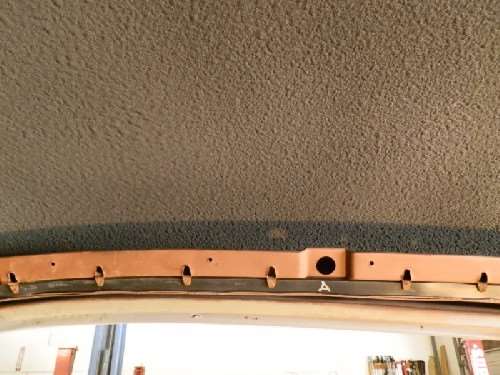  (46.31 KB) (46.31 KB)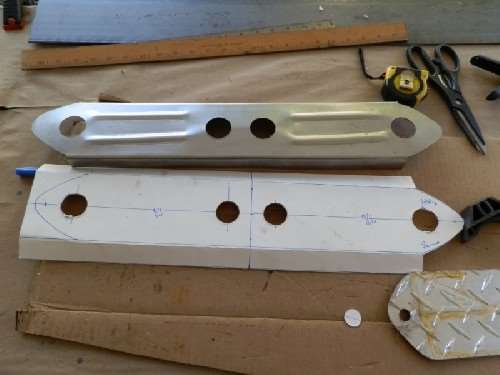  (48.90 KB) (48.90 KB)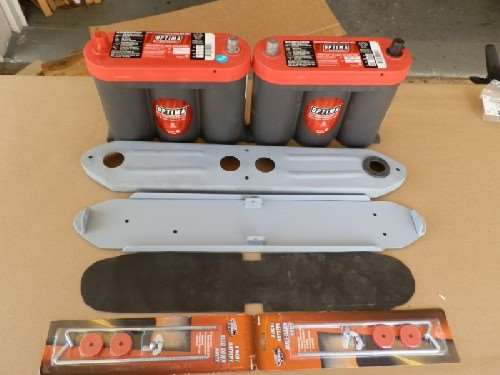  (71.48 KB) (71.48 KB)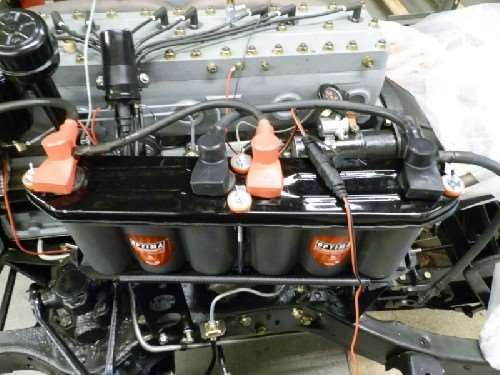  (49.99 KB) (49.99 KB)
Posted on: 2017/8/1 10:37
|
|||
|
||||
|
Re: Joe's '49 Club Sedan
|
||||
|---|---|---|---|---|
|
Home away from home
|
Tinman, in response to our PM conversations, I am posting some photos of the air filter modification on my 47 Custom Clipper. I no longer have the filter element number. I went to the nearby AutoZone and rifled through their filter stock until I found one that worked. As I PMed, I admire your high quality work and its results. I hope the photos help. JWL
Posted on: 2017/8/2 15:40
|
|||
|
We move toward
And make happen What occupies our mind... (W. Scherer) |
||||
|
||||
|
Re: Joe's '49 Club Sedan
|
||||
|---|---|---|---|---|
|
Home away from home

|
JW,
Thanks for the pictures. It appears that our 2 air filters are different. I don't remember whether I was specifically looking for an oiled, washable filter element (like K&N) but I knew I wanted to replace the oilbath element. I measured the housing and figured I needed a 8" OD by 3" tall element to replace the oilbath part of the filter. The only element I could find with those specs was 8" by 3" but was not rigid. I had to build an adapter to go at the bottom of the element to keep the round shape. When I looked at your pictures, the top of air cleaner covered up the filter while mine shows about a 1" gap with the filter shown. I took my filter apart and reinstalled the oilbath section. It still has the 1" gap and shows the filter element. There are differences between your '47 and my '49 and that's why there is the gap with the filter showing. FYI - I probably should have looked for a standard paper element, it would have worked as well and been easier to install without requiring fabrication.
Posted on: 2017/8/3 10:25
|
|||
|
||||
|
Re: Joe's '49 Club Sedan
|
||||
|---|---|---|---|---|
|
Home away from home
|
Tinman, It appears that our air filter assemblies are different. Yours should be okay with the replacement filter element. JWL
Posted on: 2017/8/3 10:31
|
|||
|
We move toward
And make happen What occupies our mind... (W. Scherer) |
||||
|
||||
|
Re: Joe's '49 Club Sedan
|
||||
|---|---|---|---|---|
|
Forum Ambassador

|
I'm a fan of oil bath air filters and always feel a twinge when I see another converted to dry elements. They are extremely efficient and though they can be a bit of a pain to clean, most of us would only end up having to do it once every 5-15 years. Take a look at serious road construction equipment and you'll see that oil bath predominates still. The reason is that they can take extreme loading of dirt without suffering restriction to air flow. Unlike dry elements where the dirt is trapped directly in the element and thus slowly closes off the paths for air flow, in the oil bath most of the dirt is captured in the oil before the air flow ever reaches the filter media (usually oiled kapok fiber), hence you maintain less restrictive breathing over longer intervals. A very clever design.
Posted on: 2017/8/3 10:45
|
|||
|
||||
|
Re: Joe's '49 Club Sedan
|
||||
|---|---|---|---|---|
|
Home away from home

|
Personally, I haven't seen a car with and oilbath air cleaner since the '60s. There is absolutely no harm done with replacing a messy oilbath filter as long as you can but it back to original without doing harm if that is your personal choice. In the area of auto air filtration, technology has marched on.
Posted on: 2017/8/3 11:16
|
|||
|
||||
|
Re: Joe's '49 Club Sedan
|
||||
|---|---|---|---|---|
|
Home away from home

|
Packard Project Summary 2017 Part 1
I've worked on cars most of my life and planned to make that a full time hobby in retirement. When I retired and moved back to Florida, our home garage was very cramped. My generous wife allowed me to purchase a rundown body shop to work on my car projects. One of the benefits of the shop was a paint booth. It was primarily used to store car parts and tools but with some effort could actually be used to paint. After it was cleaned and cleaned up, I rolled the Packard in to paint. The body was final prepped, masked and painted. It was unmasked and rolled outside to let the paint cure. Then the hood and doors were rolled in on support frames and prepped and painted. Next came the front fenders and trunk. Once the paint had sufficient time to cure, it was sanded and buffed with compound. Still needed to be final buffed with a fine compound. To put the body back on the chassis, the chassis was rolled out and turned around to back under the body. The body was rolled in the shop and suspended both back and front while the body dolly was removed. The chassis was carefully rolled under the body using 4 sets of rollers to position it. The body was lowered on to the chassis and temporarily secured with several body bolts. With the body back on, the trunk was mounted. Holes drilled through the hinges helped get it mounted precisely. The gastank was mounted next. The original tank was badly rusted and not a fan of coating it. With no new Series 23 replacement tanks available, I used a new '53/'54 Chevy tank in its place. Made an adapter to align the filler tube with the gas door. Attach file:  (71.86 KB) (71.86 KB)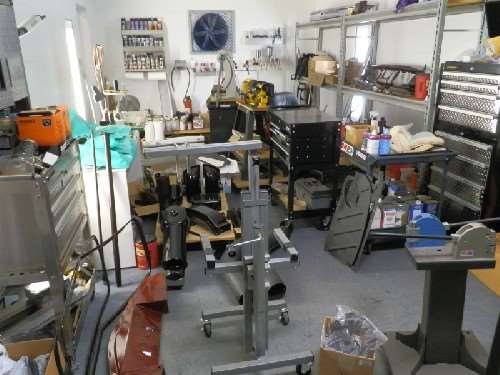  (40.14 KB) (40.14 KB)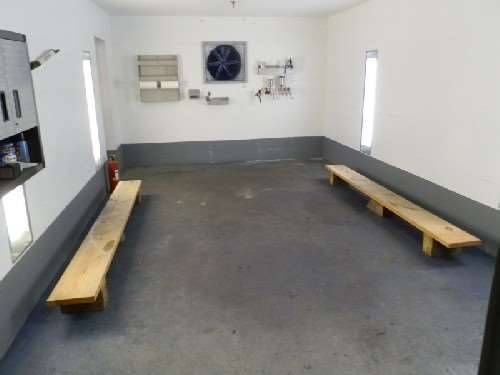  (43.00 KB) (43.00 KB)  (46.48 KB) (46.48 KB)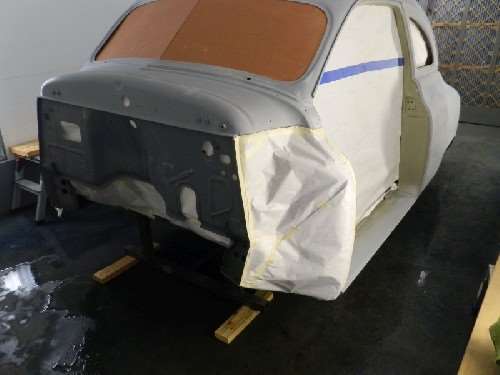  (47.94 KB) (47.94 KB)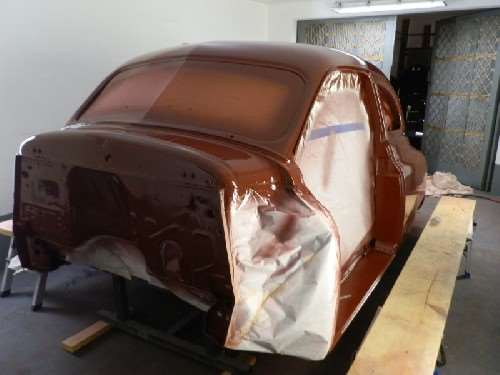  (51.09 KB) (51.09 KB)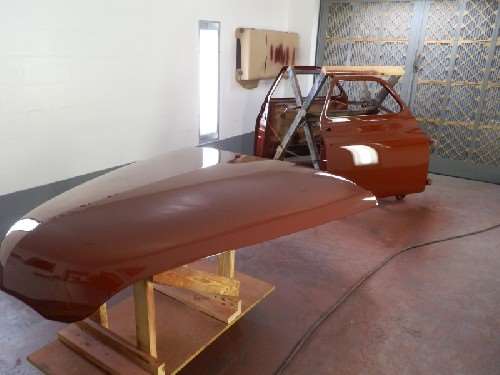  (53.83 KB) (53.83 KB)  (53.97 KB) (53.97 KB)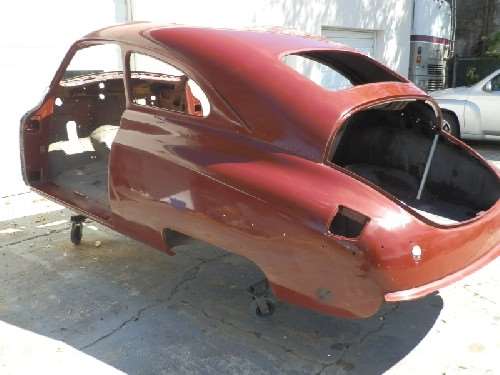  (46.00 KB) (46.00 KB)  (76.38 KB) (76.38 KB)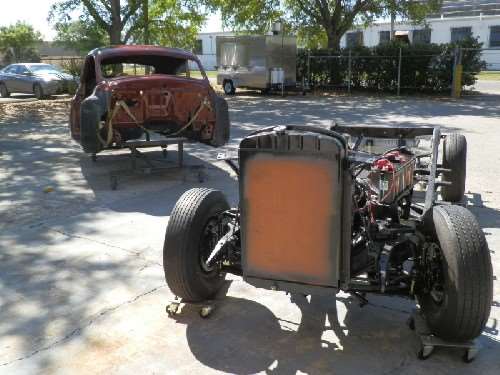  (60.32 KB) (60.32 KB)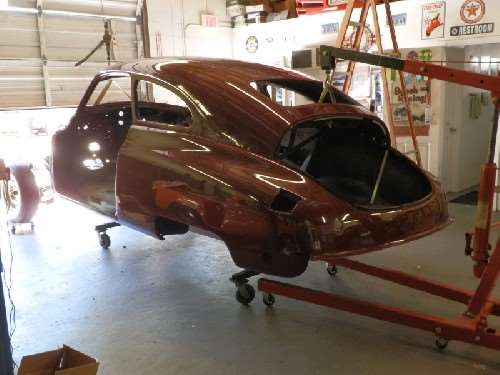  (56.50 KB) (56.50 KB)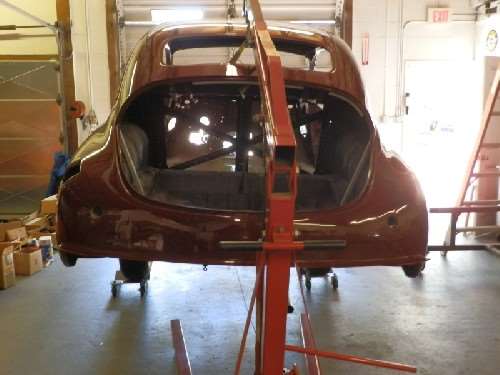  (74.61 KB) (74.61 KB)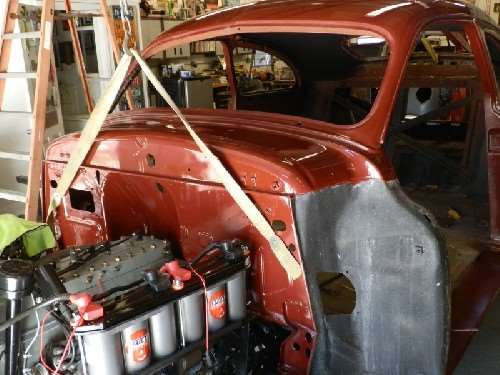  (51.46 KB) (51.46 KB)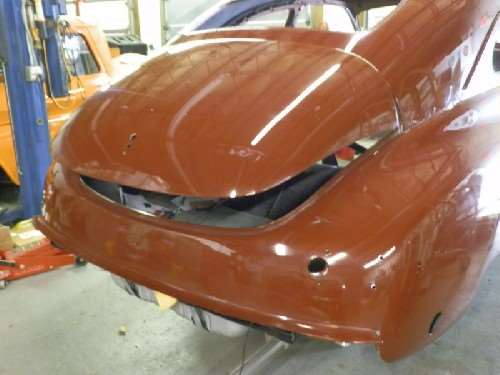  (57.38 KB) (57.38 KB)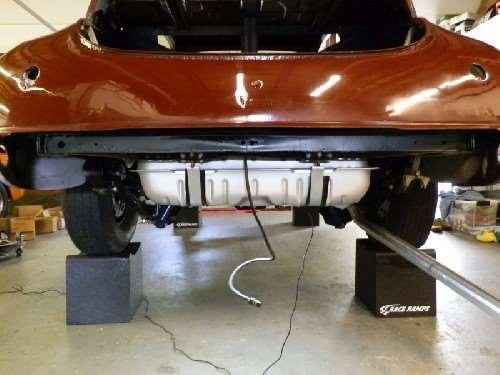  (60.26 KB) (60.26 KB)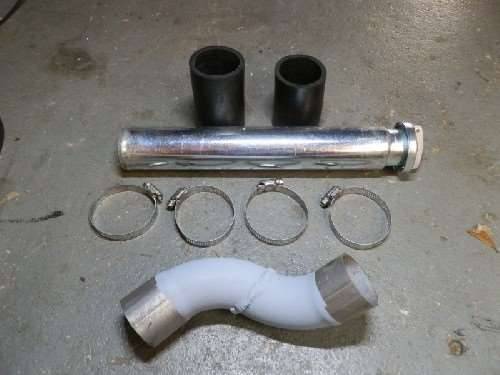  (49.30 KB) (49.30 KB)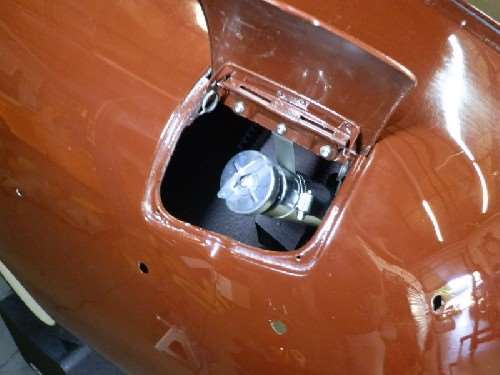
Posted on: 2017/8/3 11:33
|
|||
|
||||
|
Re: Joe's '49 Club Sedan
|
||||
|---|---|---|---|---|
|
Home away from home
|
"...rather than replace the original long 6 volt battery, it was replaced with 2 Optima 6 volt batteries wired together for 6 volts."
Hey, just a word of warning from an electrical engineer who has worked with automotive battery architectures and experienced the failure modes of batteries connected in parallel. Of course it is true you'll have much higher cranking current available; true also that there are examples in trucking, commercial construction and agriculture equipment that used batteries in parallel. However, ultimately when one of the batteries fail before the other, the failed battery will have a lower terminal voltage and become a low resistance short to the other battery. The result is a very high current from one to the other and a potential fire/chemical hazard. Just want you to know that. Finally, a battery that can delivery a whopping current can also receive it during charging, so it's worth making sure your voltage/current regulators are working at preferred voltage in order to protect the generator from over current and armature melting. For what it's worth, NAPA offers a screw terminal mounted fuse in several different ampere ratings that can be used to protect the generator. I hope this helps, Pat
Posted on: 2017/8/3 11:56
|
|||
|
||||
|
Re: Joe's '49 Club Sedan
|
||||
|---|---|---|---|---|
|
Home away from home

|
Pat,
Thanks for the advice on the battery setup. I haven't tried this before. I've had good luck with the 12V Optima gel batteries but this is my first with 6V. I'm using a GM "CS" type alternator with 6V positive ground rather than a generator and regulator. The alternator is connected to the negative battery source at the solenoid. The power tap to the fuse panel in the dash to feed all the other electrical components also attaches to the negative solenoid lug and goes through a 175 amp fuse mounted on the firewall. This should keep any extreme amperage surge out of the dash.
Posted on: 2017/8/3 12:25
|
|||
|
||||

